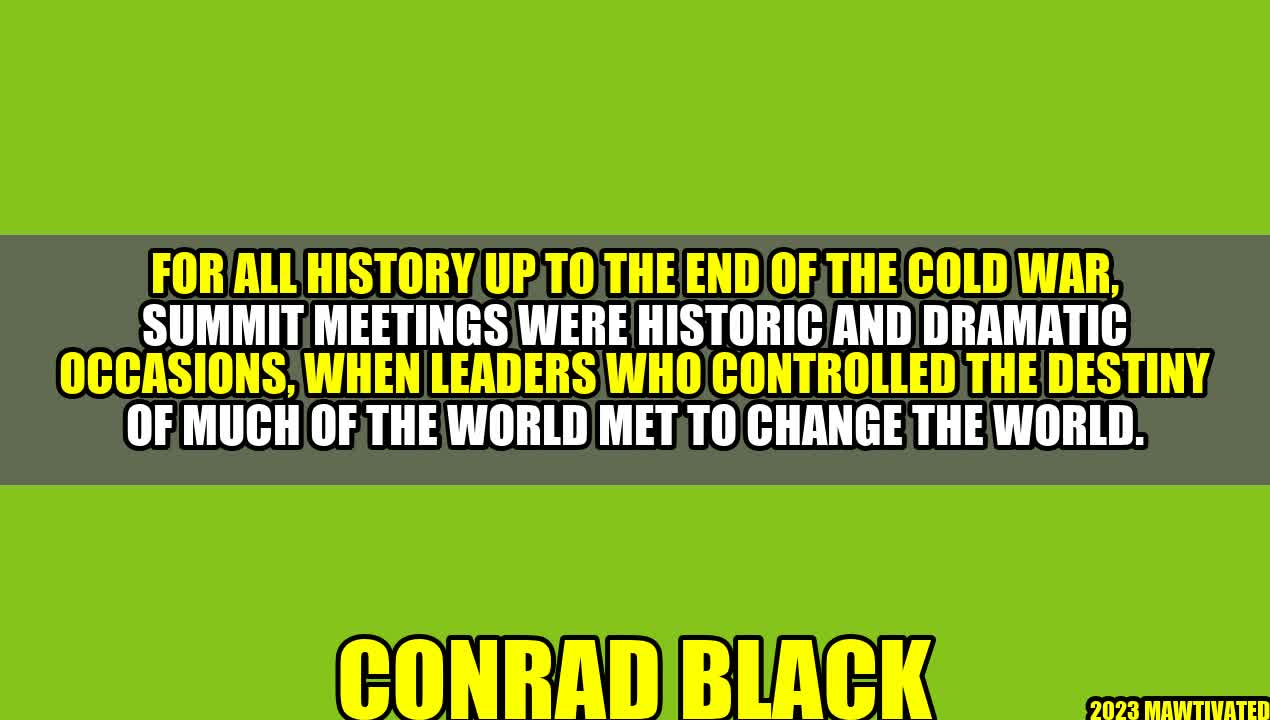Summit Meetings: Historical Occasions that Changed the World

Once upon a time, in the midst of the Cold War, two powerful leaders met in a summit that would go down in history. It was the year 1986, and Ronald Reagan, the President of the United States, met with the General Secretary of the Communist Party of the Soviet Union, Mikhail Gorbachev, in Reykjavik, Iceland.
The meeting was high-stakes, with the two leaders discussing arms control and potential disarmament. For two days, they went back and forth, negotiating fiercely. On the second day, Gorbachev brought up his desire to ban all weapons in space, to which Reagan countered with his Strategic Defense Initiative, commonly known as Star Wars.
It seemed like an impasse, with both leaders refusing to budge. However, in a moment of brilliance, Reagan suggested that if Gorbachev were to agree to limit his Intercontinental Ballistic Missiles, the US would limit its own as well. The deal was struck, and although a final agreement would not be signed for another three years, the Reykjavik Summit paved the way for the eventual Intermediate-Range Nuclear Forces Treaty.
For all of history up to the end of the Cold War, summit meetings were historic and dramatic occasions, when leaders who controlled the destiny of much of the world met to change the world. These meetings represented a unique opportunity for countries to speak face-to-face and resolve complex issues that could potentially lead to war or greatly impact the world.
Author Background
Conrad Black, a distinguished Canadian-British historian, is known for his expertise on politics, history and business. He has written several books including his biography, “A Life in Progress.” Black was a longtime newspaper publisher and owner, as well as a media executive. His experiences provide unique insight into the world of politics and the impact of major global events.
Examples of Summit Meetings That Changed the World
- The Yalta Conference (1945): Franklin D. Roosevelt, Winston Churchill, and Joseph Stalin met to discuss the administration of post-World War II Europe. They agreed to divide Germany into four zones of occupation and allowed for Soviet influence in Eastern Europe.
- The Geneva Summit (1955): Dwight D. Eisenhower and Soviet leader Nikolai Bulganin aimed to ease tensions and discuss mutual disarmament efforts. Although no treaties were signed, it paved the way for future talks and negotiations.
- The Camp David Accords (1978): Jimmy Carter hosted Egyptian President Anwar Sadat and Israeli Prime Minister Menachem Begin to discuss a peace treaty. After thirteen days of negotiations, they agreed to sign the Camp David Accords, leading to a peace treaty between Egypt and Israel.
Three Lessons Learned from Summit Meetings
- Communication is Vital: Summit meetings provide a unique opportunity for leaders to speak face-to-face and discuss complex issues. This direct communication is vital in understanding each country’s perspective and finding common ground.
- Preparation is Key: Leaders must come into summit meetings with a clear agenda and understanding of what they want to achieve. This allows for effective negotiations and can prevent misunderstandings or failed agreements.
- Leaders Must be Willing to Compromise: One of the most important aspects of a successful summit meeting is the willingness for leaders to compromise. Each country has its own interests and needs, and being able to find a middle ground is key to achieving a successful outcome.
Conclusion
Summit meetings have played a significant role in shaping the world we live in. These occasions provide an opportunity for world leaders to come together and resolve complex issues that can greatly impact the world. Communication, preparation, and a willingness to compromise are essential to achieving successful outcomes. As the world becomes more interconnected, summit meetings will continue to be integral in shaping the future.

Curated by Team Akash.Mittal.Blog
Share on Twitter
Share on LinkedIn